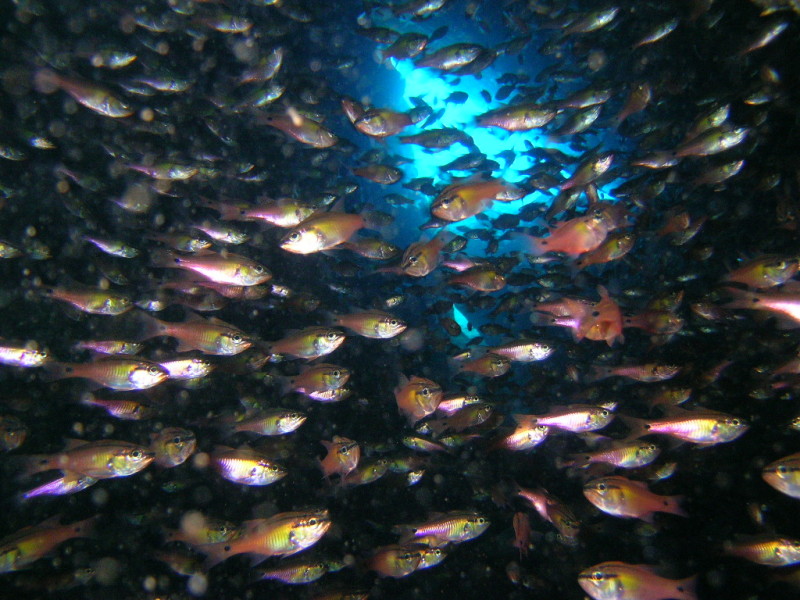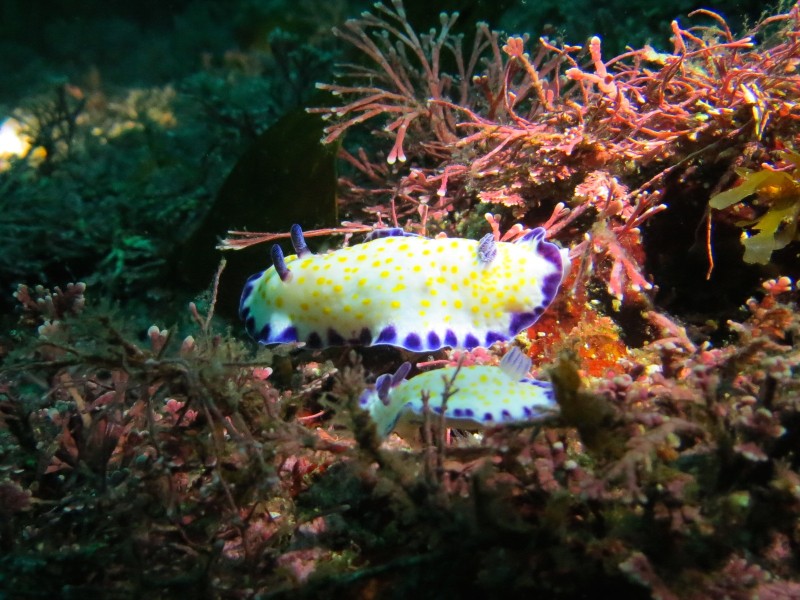By Bonnie Waycott
Remnants of an ancient volcano, the Oki Islands are made up of four large inhabited islands and about 180 smaller, uninhabited ones. Large schools of fish inhabit the upper reaches of the walls here, with damselfish and chicken grunts both amassing in significant numbers. The dramatic underwater scene mainly consists of huge boulders and rocks on a sandy seabed. Throw in some schooling yellowtail amberjack and plentiful blennies poking their little heads out of their rock lairs in the rocks, and you’ll begin to understand why the Oki Islands in the Sea of Japan offer great diving.
Where to Dive
The largest of the Oki Islands is Dogo Island, and the Dozen Islands, consisting of Nishinoshima, Nakanoshima and Chiburijima, offer the most choice and variety when it comes to dive sites, with plenty of marine life to keep divers occupied with their cameras. Enter the underwater realm off Nishinoshima and you’ll find a spot jammed full of fish life over a carpet of seagrass beds. The site, known as Iguri, has two big, wide rocks that drop down to about 65 feet (20 m). At first glance, it’s somewhat barren and monotonous, but all manner of macro creatures can be found. The leafy green seaweed offers sanctuary to a hoard of marine critters such as orange starfish, crabs and tiny nudibranchs.
The 30-minute journey from Nishinoshima to a tiny, uninhabited island called Hoshi-no-kami-shima is also worth it. More like a huge boulder than an island, its walls seem to sink forever into the dark depths of the ocean, although there are some sandy patches nearby. The site has a healthy array of soft coral and critters, surrounded by common fish such as sardines and sea bream going busily about their business. Long rays of sunlight pierce through the ocean’s surface and schools of shimmering damselfish fin gracefully through the blue sunlit waters. There are some slightly challenging currents, but the best way to explore this site is to descend and then ascend slowly, rising back up along the structure, finning in close and taking time to study the little holes and dark patches. Look out for some bright blue and orange sea slugs as well as a range of blennies.
Dogo Island, or Okinoshima, also offers up a plethora of macro subjects and numerous types of fish. The dive site Oki-no-Tatami is a huge rock that sits over a carpet of white sand, its sides dropping to a sandy bottom at around 82 to 88 feet (25 to 27 m). Although there is not much in the way of pelagic fish, green algae and juvenile seaweed coat the rock’s walls and schools of tiny chicken grunts and damselfish come in close. It’s also home to a wealth of blennies nestled in the sanctuary of the rock. Some look quite comical with feathery tentacles above the eye, peering out of dark holes and retreating back inside when startled. Sea urchins, crabs and turban shells also blend in perfectly with the seaweed, and buzzing about in the mild current is a multitude of common fish. Divers can also spot the white, purple and cream-coloured nudibranchs.
Back on Land
If you’re keen to do more than just dive, the Oki Islands have plenty on offer. Stop by at the Shirashima Coast Lookout for an easy stroll or visit Rosokujima (Candle Island) at sunset when the sun appears to sit over the island making it look just like a candle. Enjoy some panoramic views at the top of Mt. Akahage or go sea kayaking or cycling for a different view of the islands. For more on the Oki Islands, check out the Nishinoshima Tourism Office.




